“Abortion is Sacred:” The Past and Present of Reproductive Rights
When the topic of reproductive health pops up in U.S. news—usually with conservative states trying to limit its access—it’s easy to forget, or perhaps many haven’t learned, that less than 150 years ago, the now polarizing hot-button issue of abortion was a widely accepted part of life in this country. In fact abortion “is absolutely traditional, it is sacred,” says Rachael Lorenzo, co-founder of reproductive health and justice center Indigenous Women Rising.
“Our ancestors have been having abortions and controlling our fertility since time immemorial, since our Creator put us where we are today. And whether it was drought or famine or war or whatever, we have been controlling our fertility.”
Rachael Lorenzo, co-founder of Indigenous Women Rising
Even though abortion is currently a constitutional right in the U.S., more than half the state legislatures are on a crusade to repeal and criminalize the right to choose. The war over abortion and bodily autonomy isn’t only fought in Congress and the courts, but also outside reproductive health clinics, inside doctor’s offices, at church, and in the streets.
In recent history, control over one’s own body and fertility (including abortion) was broadly normal and not only for “Indigenous people, but every person who could become pregnant, that was part of life,” Lorenzo points out. It wasn’t until settlers invaded the continent, forcefully removed and massacred many Indigenous people, created colonies, and began populating the land, that a shift in who controlled fertility was set in motion.
Because the legality of abortion in each of the colonies depended on the stance of the European country which controlled it, the shift wasn’t widespread. In fact people could still have legal abortions, no matter the colony they lived in, up until they felt the baby move, or ‘quicken,’ which occurs between 16-25 weeks into pregnancy.
Abortion first became criminalized nationwide around 1880 partly out of fear that if white Protestant women (for whom legal abortion was most accessible) continued having abortions, America would fill up with “aliens.” This theory was spread by the main proponent of outlawing abortion at the time, which wasn’t conservative religious groups, but the American Medical Association (AMA).
The AMA also argued against abortion because they wanted the medical profession to remain male-dominated—if women couldn’t have abortions, they had to stay at home to raise children.
“[Should our country] be filled by our own children or by those of aliens? This is a question our women must answer; upon their loins depends the future destiny of the nation.”
Dr. Horatio Storer, an OB-GYN who was a leader in the AMA anti-abortion campaign
Since then, the “loins” of people who can become pregnant have been fiercely debated—as if the internal flesh of a person is a communal resource that needs regulation.
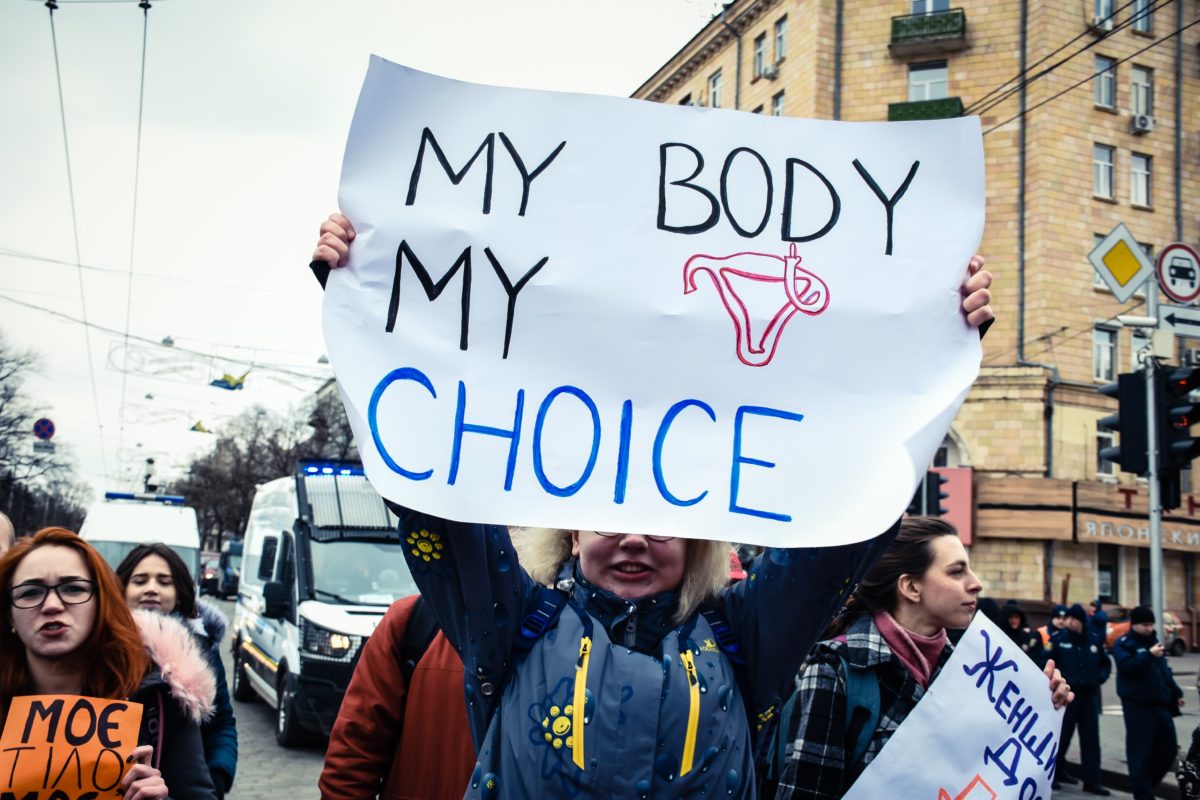
Right now abortion is in the headlines because Texas lawmakers passed SB-8, known as the ‘six-week abortion ban,’ which went into effect at the beginning of September, including both surgical abortion and medical (pill) abortion. This law effectively prevents anyone who can become pregnant from having an abortion in Texas (even if the pregnancy stems from rape or incest) by permitting a type of vigilantism—giving the green light for anti-abortion advocates to file lawsuits against reproductive health centers (and any “aiders and abettors“) if they provide an abortion after a heartbeat is detected.
If the anti-abortion advocate wins, they can receive a bounty reward of $10,000 or more.
Before the bill was signed into law, the Center for Reproductive Rights and their partners filed a lawsuit on behalf of a coalition of abortion funds, doctors, clinic staff, support networks, and clergy members asking the U.S. District Court for the Western District of Texas to block the law.
“The state has put a bounty on the head of any person or entity who so much as gives a patient money for an abortion after six weeks of pregnancy, before most people know they are pregnant. Worse, it will intimidate loved ones from providing support for fear of being sued.”
Nancy Northup, president and CEO of the Center for Reproductive Rights
The federal district court was “prepared to give some relief,” according to Joanna Grossman, a Texas-based law professor and reproductive rights lawyer, but the Fifth Circuit Court of Appeals intervened and ruled for the law to go into effect. At that point, the pro-choice coalition filed an emergency appeal to the U.S. Supreme Court, and to Grossman’s surprise, the court denied the appeal.
“Because the law is clearly unconstitutional and you would not expect them to, without even having the opportunity to review the merits of the case, you would not expect the Supreme Court to have allowed such a plainly unconstitutional law to go into effect.”
Joanna Grossman, law professor and reproductive rights lawyer
In the Supreme Court’s published decision, the four chief justices who dissented shared their opinion that Texas’ “desired consequence” worked because since the state “delegated enforcement of that prohibition to the populace at large,” they are not the ones who can be “restrained from enforcing their rules because they do not enforce them in the first place.”
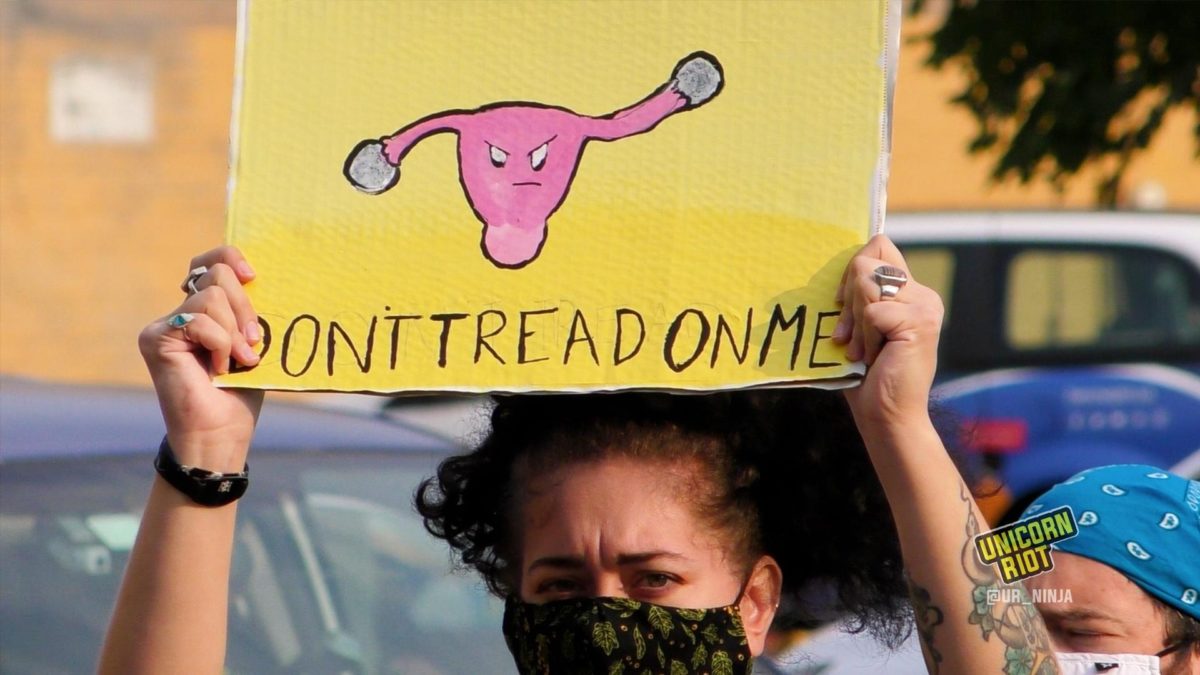
According to the Center for Reproductive Rights, approximately 85-90% of people who obtain abortions in Texas are at least six weeks into pregnancy. If the statistics only counted minors, “it would be even more skewed,” says Grossman.
“Minors tend to not have as regular menstrual cycles, not know as much about whether they might be pregnant, not necessarily have the same access to getting pregnancy tests in a timely manner and paying for them, and finding clinics, so they tend to have kind of built in delays, just due to their different stage in life.”
Joanna Grossman, law professor and reproductive rights lawyer
As a lawyer, Grossman gets referred cases to represent pregnant youth from Texas reproductive health center Jane’s Due Process. She helps youth navigate and file for judicial bypass, which depending on the judge’s ruling, may give them an opportunity to get an abortion without parental consent.
We asked Grossman if she thinks the law will do what it intends to do—threaten abortion clinics with financial loss so they don’t dare violate the six-week ban.
“How the law is set up basically, nobody would proceed in the face of that risk, the risk is so incalculable and large, so the providers are being completely rational in saying I can’t operate in this environment, that’s absolutely their only option because they don’t have unlimited time or money.”
Joanna Grossman, law professor and reproductive rights lawyer
Grossman also explained that the law is set up so that not only could the provider be sued for $10,000, but everyone who works in the practice. Therefore the receptionist, social workers, the sonogram technician, the office manager, etc., could all be sued for the same procedure by the same plaintiff or by different plaintiffs.
Rachael Lorenzo, co-founder of reproductive health and justice center Indigenous Women Rising (IWR), told Unicorn Riot that the law is “bullshit” and that abortion funds and clinics like IWR “have faced terrorism and harassment from antis before.“
Almost 100 years after abortion was federally outlawed, the Supreme Court legalized it up until a fetus’ viability outside the womb, or 3rd trimester, with its ruling in the Roe v. Wade case (involving a Texas statute); but not without some heavy opposition. According to the National Abortion Federation (NAF) which tracks clinic harassment and intimidation in the U.S., since the passage of Roe v. Wade, “there has been an organized campaign by anti-abortion extremists which has resulted in escalating levels of violence against women’s health care providers.”
Anti-abortion radicals have set clinics on fire and bombed them since the first reported incidents in 1976. They have also “used chemicals to block women’s access to abortion employing butyric acid to vandalize clinics and sending anthrax threat letters to frighten clinic staff,” according to NAF.
In 2015 in Colorado Springs, Colorado, 57-year-old Robert Lewis Dear killed three people and wounded nine others in a shooting at a Planned Parenthood clinic. He has since been behind bars and in psychiatric facilities, with his trial on hold until he is found competent to stand trial.
Unicorn Riot covered a protest and counter-protest in 2018 outside the Planned Parenthood Denver Stapleton Health Center. The Christian ‘pro-life’ group “40 Days For Life” was the main organizer and they focused on quietly praying and holding anti-abortion signs. A smaller, more aggressive group of protesters set up a large display of graphic images of fetuses and put baby doll parts covered in fake blood on the sidewalk. One of them attempted to hand each vehicle entering or exiting Planned Parenthood anti-abortion pamphlets while telling people, “Don’t kill your baby” or “Save your baby.”
At this particular Planned Parenthood, patients face near-daily harassment because right across the street is a Crisis Pregnancy Center, or ‘fake health center‘, called Marisol Health. NARAL Pro-Choice America launched their End the Lies campaign in 2018 to expose these ‘pro-life’ centers that “often masquerade as real clinics by taking on similar names and addresses.“
“Clinic protesters work to redirect women away from legitimate, full-service clinics and toward nearby fake health centers or to their own fake health center buses parked outside legitimate clinics. . . Despite their deceptive practices, many of these anti-choice centers are taxpayer-funded.”
End the Lies research report
In 2011, when Texas cut family planning and reproductive health funding, it diverted that money to Crisis Pregnancy Centers, including a $1.6 million grant to anti-choice organization The Heidi Group.
“The Heidi Group believes that life begins at the moment of conception – although our world’s culture and leaders seem to think otherwise. It is our promise at The Heidi Group to be a safe space for those women who choose life for their unborn babies and to educate those on the fence about the true dangers of abortion both physically and eternally, and to share with them the everlasting guidance and love of Jesus Christ.”
The Heidi Group
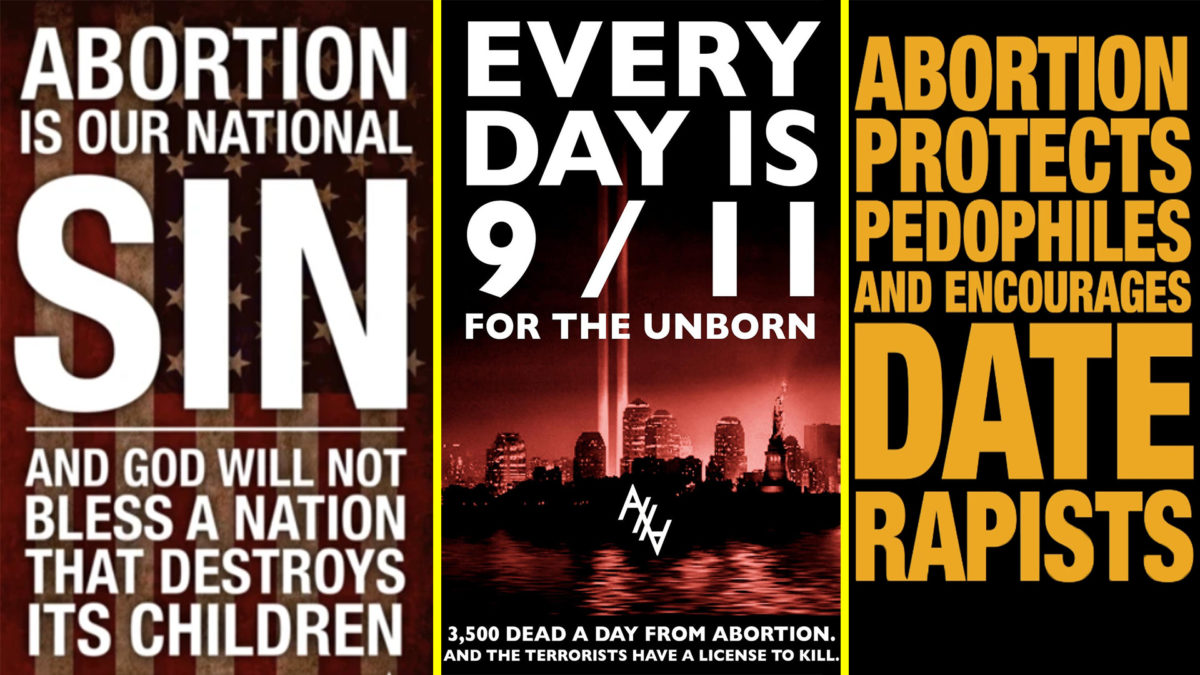
The belief that someone will go to hell if they have an abortion is a modern way of thinking. There are multiple ancient texts which describe ways to induce abortions, ways to make spermicides, and other information on gynecology and obstetrics empowering people who can become pregnant to take control of their fertility.
Early Christianity only considered abortion a sin if it was done to conceal sex before marriage and/or adultery (around 400 CE). There was also debate within the church over when the fetus got its soul, because some believed an abortion was only murder once it had one. The Qur’an, written in the 600s CE, states that a fetus becomes ensouled at 120 days after conception.
In early Brahman (Hindu) law in India, a similar ideology developed that the fetus was not considered to be a person until after the fifth month, when it finally had a soul.
In the Hebrew Bible, written around 500 BCE, personhood occurs when the baby is birthed, therefore the fetus is not regarded as a person. According to an op-ed written by Rabbi Danya Ruttenberg and Reverend Katy Zeh, “abortion is permitted in Jewish law and, if needed to save the life of the pregnant person, sometimes required.”
In 1550 BCE Egypt, the Ebers Papyrus states an abortion could be induced with the use of a plant-fiber tampon coated with a compound that included honey and crushed dates. Another text from Egypt, the Kahun Gynaecological Papyrus from 1820 BCE, described utilizing honey, acacia fruit, and acacia leaves as natural spermicides. Another suggested spermicide was a combination of crocodile dung and fermented dough.
Egypt wasn’t the only ancient society promoting birth control or abortions. Silphium, a plant native to North Africa, was used as a contraceptive in Greece and Rome.
Indigenous peoples of the Americas were also using plants around them for controlling their reproductive health, “and that includes abortion, that includes stopping hemorrhaging after a placenta is delivered,” Lorenzo shared.
It wasn’t until 1869 that the Catholic Church decided that life began at conception, when Pope Pius IX wrote in Apostolicae Sedis that excommunication was the required penalty for abortion at any stage of pregnancy.
Ironically, one of the reasons the American Medical Association initiated its anti-abortion campaign in 1857 was because “immigrant families, many of them Catholic, were larger and would soon outpopulate native-born white Yankees and threaten their political power,” as stated in When Abortion Was a Crime by Leslie Reagan.
In 1917, the Catholic Church revised its rules and included the excommunication of any others, such as doctors and nurses, who take part in an abortion. In 2021 in Texas, instead of excommunication, the penalty is bankruptcy.
“It’s not like they could say, ‘oh, well that’s fine I could set aside 5 million dollars to defend myself against a suit to give people the care they need.’ Abortion providers are not in that kind of a position. So I think there is no way to operate, which is exactly what the people who drafted the law were counting on, that they would be able to, without ever bringing a single lawsuit, shut down abortion care, and that’s exactly what they’ve done. And that’s exactly why it’s unconstitutional, and which is why the Supreme Court should have done something about it.”
Joanna Grossman, law professor and reproductive rights lawyer
Even with the potential for massive financial loss, Dr. Alan Braid, who provides abortions in Texas, defied the law on September 6, 2021, and wrote about it in an editorial in the Washington Post on September 18.
Braid wrote: “I acted because I had a duty of care to this patient, as I do for all patients, and because she has a fundamental right to receive this care.“
He went on to explain that by providing the abortion, he also intended to test the law in court (he is being represented by the Center for Reproductive Rights). To his fortune, the first two lawsuits filed against him weren’t by anti-abortion groups, but by former attorneys also interested in testing the law.
“I have daughters, granddaughters and nieces. I believe abortion is an essential part of health care. I have spent the past 50 years treating and helping patients. I can’t just sit back and watch us return to 1972.”
Dr. Alan Braid
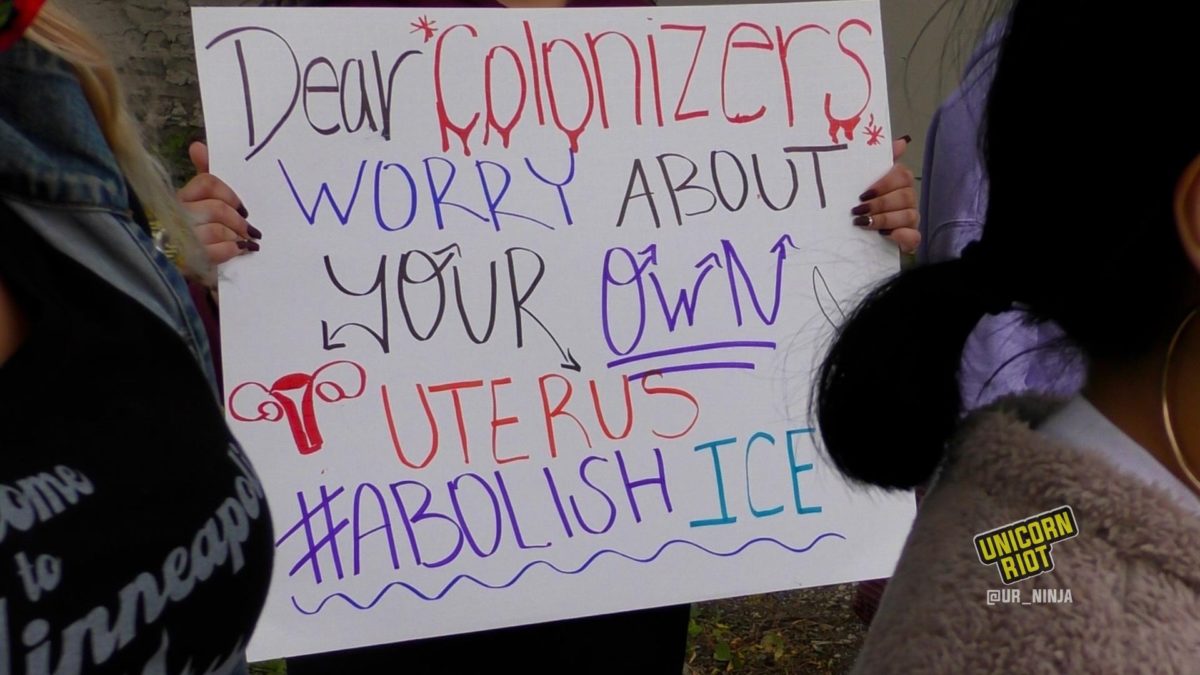
A few legal challenges have been filed since the law went into effect. On September 9, President Biden’s Department of Justice filed a lawsuit against Texas. In its first hearing on October 1, the focus was on the Justice Department’s request to temporarily halt the law while the lawsuit is ongoing. Presiding U.S. District Judge Robert Pitman ruled on October 6 in favor of the Justice Department, temporarily halting the 6-week abortion ban.
“Rather than subjecting its law to judicial review under the Constitution, the State deliberately circumvented the traditional process. It drafted the law with the intent to preclude review by federal courts that have the obligation to safeguard the very rights the statute likely violates . . . this Court will not sanction one more day of this offensive deprivation of such an important right.”
U.S. District Judge Robert Pitman
Two days later, Texas appealed the ruling to the 5th Circuit Court of Appeals and succeeded, putting the ban back into effect. The Justice Department responded on October 11, urging the courts to halt the law. The Texas Attorney’s General office has until October 14 to respond to the DOJ.
Update 10/16/21: The Texas Attorney’s General office responded on October 14 pushing the 5th Circuit to keep the 6-week ban in effect while the court hears the case. The next day, the DOJ said it will ask the Supreme Court to block the law as its legality plays out in the courts.
Another legal challenge is from the Center for Reproductive Rights, which appealed again to the Supreme Court on September 23, requesting them to intervene in the ongoing Fifth Circuit case in order to expedite it.
And in an effort to protect Roe v. Wade, on September 20, the U.S. House of Representatives discussed the possibility of passing new legislation to re-emphasize the right to abortion—not only because of Texas’ law, but the multiple restrictions making their way through other states’ legislatures.
Mississippi, a state with only one abortion clinic, passed a 15-week abortion ban in March 2018; however, the very next day, it was temporarily blocked after the Center for Reproductive Rights filed a lawsuit. In November 2018, the law was struck down by a federal district court judge, but a month later, the state filed to appeal the decision to the Fifth Circuit of Appeals.
In December 2019, the Fifth Circuit upheld the lower court’s decision to strike down the law, but Mississippi didn’t back down. Soon after, the state passed a 6-week ban on abortion. The Center for Reproductive Rights again filed a lawsuit against Mississippi asking a federal district court to block the law before it took effect on July 1.
The court struck down the law, and the state again appealed to the Fifth Circuit. In February 2020, the Fifth Circuit upheld the lower court’s decision.

Mississippi decided to be consistent and pushed further. The state requested the Supreme Court review the lawsuit filed against it by the Center for Reproductive Rights and their colleagues. In May 2021, the request was granted.
In this case, the Supreme Court has agreed to consider the question as to whether all pre-viability prohibitions on abortion are unconstitutional—therefore putting Roe v. Wade at risk. (The hearing begins with oral arguments on December 1, 2021, and a live audio feed of the arguments will be available on the Supreme Court’s website.)
Another 6-week abortion ban is in the works in Florida. At the end of September 2021, Republican state Rep. Webster Barnaby proposed a near identical bill to Texas’ 6-week ban called the “Florida Heartbeat Act.”
There are many more states with restrictions, and in fact only 18 states will have abortion protections if Roe v. Wade is weakened or overturned. Take a look at your state’s stance with this map created by the Center for Reproductive Rights.
Unicorn Riot created this infographic below highlighting the most restrictive states.
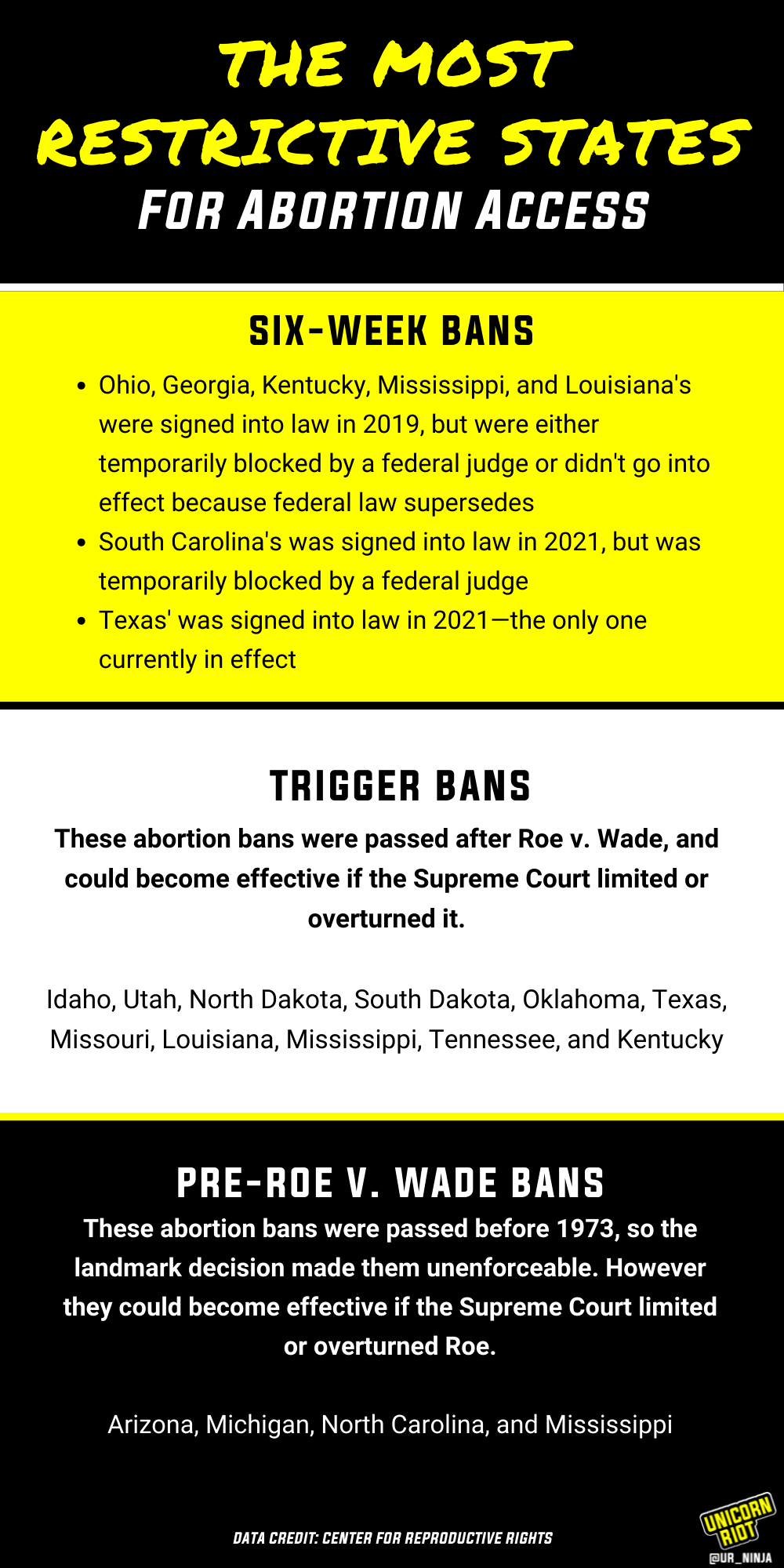
Even with more than half of U.S. states clamoring for the repeal of Roe v. Wade, the majority of U.S. adults believe abortion should be legal in all or most cases.
According to the Pew Research Center, 59% of U.S. adults say abortion should be legal in all or most cases. Another survey by PerryUndem Research/Communication found that 73% of U.S. voters don’t want Roe v. Wade overturned, and 67% think abortion should be legal in all or most cases.
We asked Joanna Grossman what she would say, if she had the chance, to the lawmakers in Texas who crafted the abortion ban.
“There’s no reasonable conversation to be had with the lawmakers because they did this knowing it was unpopular, knowing that it was unconstitutional, and knowing that the effects would be devastating, that in fact, there will be women who because of this law, will die in childbirth because they are forced to have children, not to mention all of the many other harms.”
Joanna Grossman, law professor and reproductive rights lawyer
During a press conference with Texas Governor Greg Abbott a week into the law’s passage, he told reporters that his abortion ban won’t force rape survivors to carry a consequent pregnancy to term because he’s going to “eliminate all rapists from the streets of Texas.“
Grossman thought the Governor’s response was “literal utter nonsense.“
“I mean I wish people valued women and their autonomy. I wish people thought it mattered whether women could control reproduction, so that they could have better economic security and better access to jobs, education, and safer homes.”
Joanna Grossman, law professor and reproductive rights lawyer
“Roe v. Wade is the Very Bare Minimum for Access”
When Roe v. Wade was passed, it didn’t automatically secure access to affordable, safe, and respectful treatment. And only four years later, the Hyde Amendment eliminated all federal funding for abortion, with a few exceptions: if a physician finds the pregnant person’s life would be endangered if the fetus were carried to term, or if the pregnancy stems from rape or incest.
If those exceptions don’t apply and the pregnant person doesn’t have insurance (or the insurance doesn’t cover it), then they would have to pay at least $500 out of pocket, otherwise they can’t access a legal abortion. In addition to Medicaid, the Indian Health Service (IHS) is affected by the Hyde Amendment. Many Indigenous people in the U.S. rely on IHS, which is a “crappy healthcare system,” says Rachael Lorenzo.
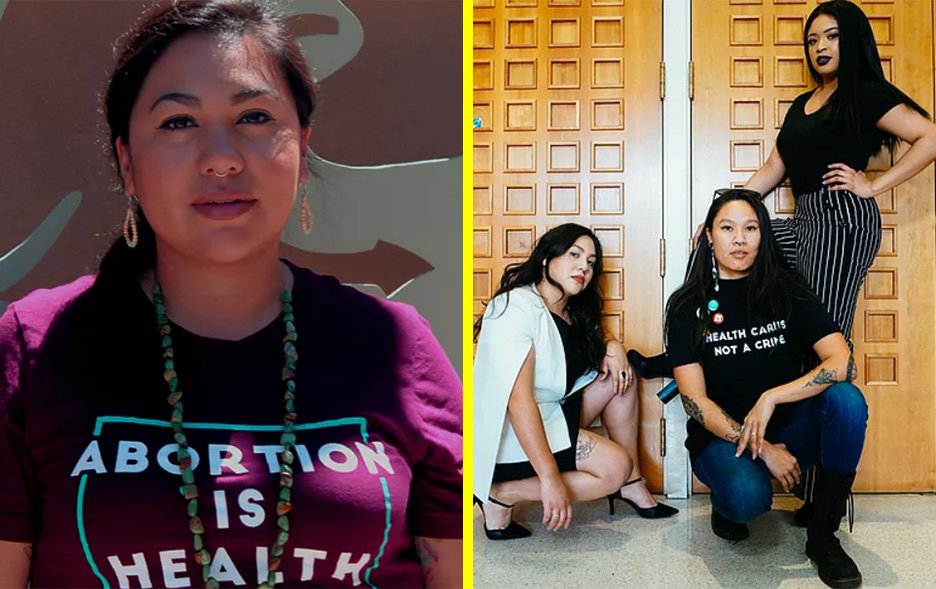
Lorenzo, who is Mescalero Apache, Laguna Pueblo, and Xicana, is a queer parent of two. One of the main motivations for them in creating reproductive health and justice center Indigenous Women Rising, was to make “space for us to tell our own stories on our own terms.“
“There isn’t a whole lot of space, or there wasn’t a whole lot of space, within the reproductive justice movement for Indigenous people to be able to be our whole selves without this romanticized caricature essentially of what people think Native Americans look like and how we act, and what our beliefs are.”
Rachael Lorenzo, co-founder of Indigenous Women Rising
Lorenzo talked about a large swath of the reproductive justice movement they call “pussy hat feminism,” which doesn’t allow for critique of one of its popular slogans: ‘abortion on demand and without apology.’ Although Lorenzo admits the slogan is a “a great thing to aspire to,” they don’t think it speaks “to the values of a lot of Indigenous communities.“
“We have to also consider colonization . . . and the history of boarding schools and how we’ve been indoctrinated by Christian religions and have had our language and our culture stripped away, and so when we’re dealing with all of that and trying to figure out for ourselves where abortion fits in our spiritual lives, that kind of rhetoric doesn’t allow room for us to feel any kind of these mixed feelings around abortion and be validated. Like we should be so grateful that abortion is legal in all 50 states, but for us it’s essentially not.”
Rachael Lorenzo, co-founder of Indigenous Women Rising
They mentioned how trans, queer, and gender-fluid relatives are also often left out of “pussy hat feminism.” The day after Donald Trump was inaugurated in 2017, millions worldwide participated in the Women’s March to oppose his misogynist and bigoted behaviors, but in doing so, ended up alienating people who didn’t fit into a narrow definition of ‘women.’
Unicorn Riot wrote an in-depth piece about the march, sharing the voices of those who were left out and disrespected.
Lorenzo also spoke with us about blood quantum and how that complicates Indigenous reproductive health decisions. Blood quantum was invented to control and manage the entitlements to federal benefits for Indigenous people. When the Dawes Act was passed in 1887, the federal government acquired millions of acres of Indigenous territory, and then administered allotments back to people based on a new classification of race—“freedmen, intermarried whites, and Indians by blood.”
Under this new classification, the less ‘Native blood’ someone had in their system meant they received larger, better pieces of land, and also more resources and opportunity in the dominant white settler society.
However, over time, federal benefits and tribal inclusion became most attainable for ‘pure Natives.’
Currently, all Natives enrolled in a federally-recognized tribe are issued a Certificate of Degree of Indian Blood, also known as a CDIB, by the Bureau of Indian Affairs. The CDIB specifies an individual’s blood quantum.
“So today Indigenous women or who can become pregnant are having to consider who we have children with, and what that means for the continuity of our people, especially if we’re low income. Are our children able to access Indian Health Services if they’re not enrolled?”
Rachael Lorenzo, co-founder of Indigenous Women Rising
Lorenzo continued, “There are all of these questions like we’re talking about fucking horses or dogs, like how to mate. That is so dehumanizing.”
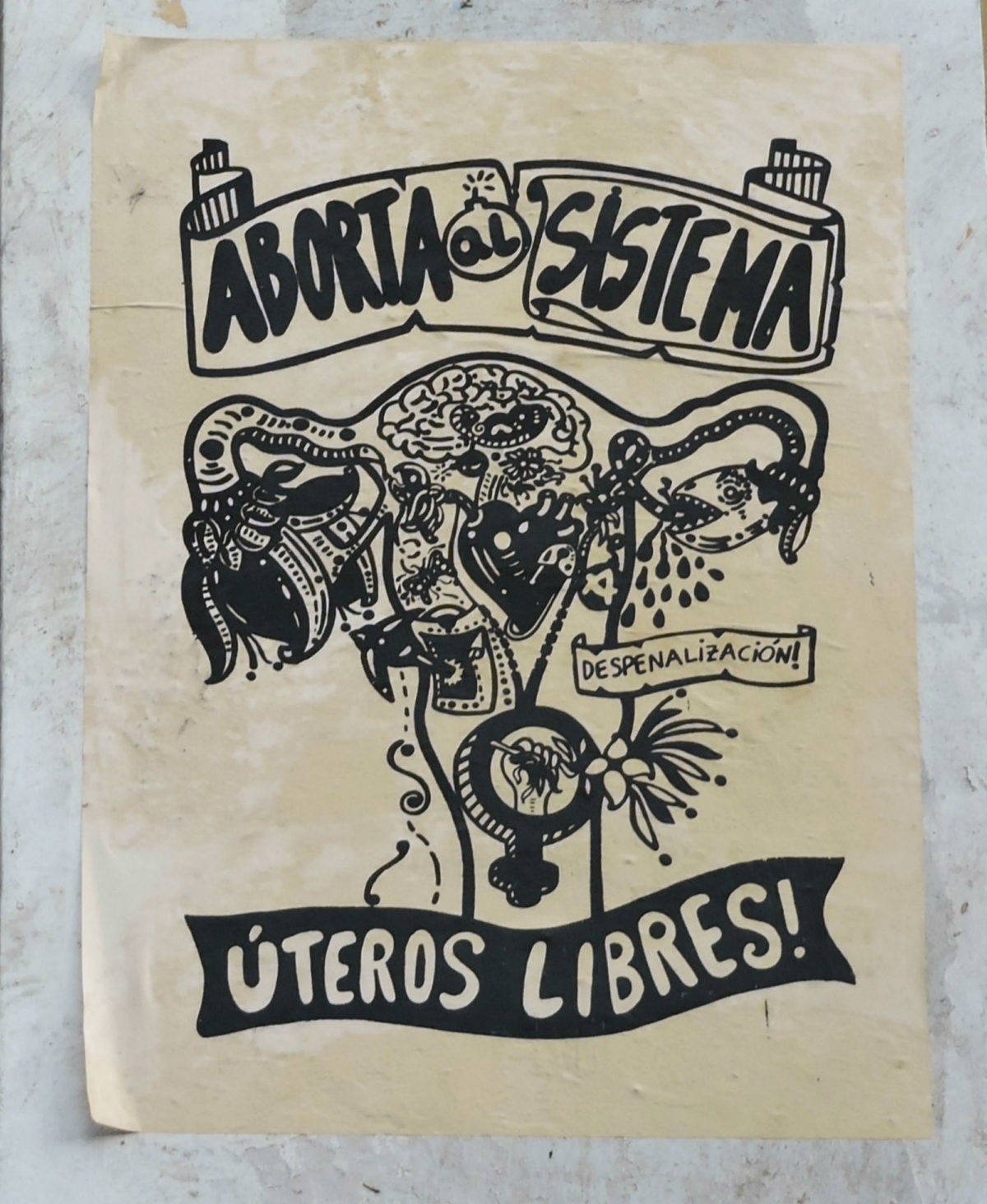
Indigenous people, and other people of color, have historically received the worst, and sometimes forced, reproductive healthcare.
When abortion was federally criminalized in 1880 in the U.S., a male doctor named James Marion Sims was appointed president of the American Gynecological Society, an organization he helped found. Sims, who was also president of the American Medical Association (the organization that pushed for the criminalization of abortion), tortured (or ‘experimented’ on) countless enslaved Black women.
Sims was known in Montgomery, Alabama as a reliable physician who could fix injuries and pains that prevented slaves from being economically productive for their masters. He took temporary ownership of many of his patients until their treatment was complete, which delighted him: “There was never a time that I could not, at any day, have had a subject for operation.”
He fixated on vesicovaginal fistulas, which are abnormal openings between the bladder and the vagina that result in urinary incontinence. Sims didn’t use anesthesia on any of his Black patients because he believed Black people didn’t experience pain like white people. Anarcha, a 17-year-old enslaved woman, was forced to endure 30 operations.
Forced medical procedures have also happened at the hands of the U.S. federal government and state governments. Between 1907 and 1937, eugenics laws were passed in 32 U.S. states, leading to nearly 70,000 forced sterilizations.
In addition to those laws, in the 1970s, Indian Health Service (IHS) had a policy to forcibly sterilize Indigenous women. Lorenzo pointed out it was “targeting full blooded Indigenous people with the goal of breeding us out of existence, so that way the federal government wouldn’t have trust responsibilities.” Accurate records were not kept, but the total number of forced tubal ligations and hysterectomies range from 3,400 to 70,000, or as many as 25% of those between the ages of 15 and 44 years old.
In more recent years, forced sterilization still occurs. Between 2006 and 2010 “146 female inmates in two of California’s women’s prisons received tubal ligations,” all of which were unauthorized, and at least 36 “directly violated the state’s own informed consent process.”
“The majority of these female inmates were first-time offenders, African-American or Latina. Echoing the rationale of the eugenicists who championed sterilization in the 1930s, the physician responsible for many of these operations blithely explained they would save the state a great deal of money.”
Alexandra Minna Stern, Professor, University of Michigan
In September 2020, several women opened up about being forced to get hysterectomies or tubal ligations while in ICE detention. As written in a complaint, many women reported that a detention center sent them to a particular gynecologist outside the facility. The women called him the “uterus collector.“
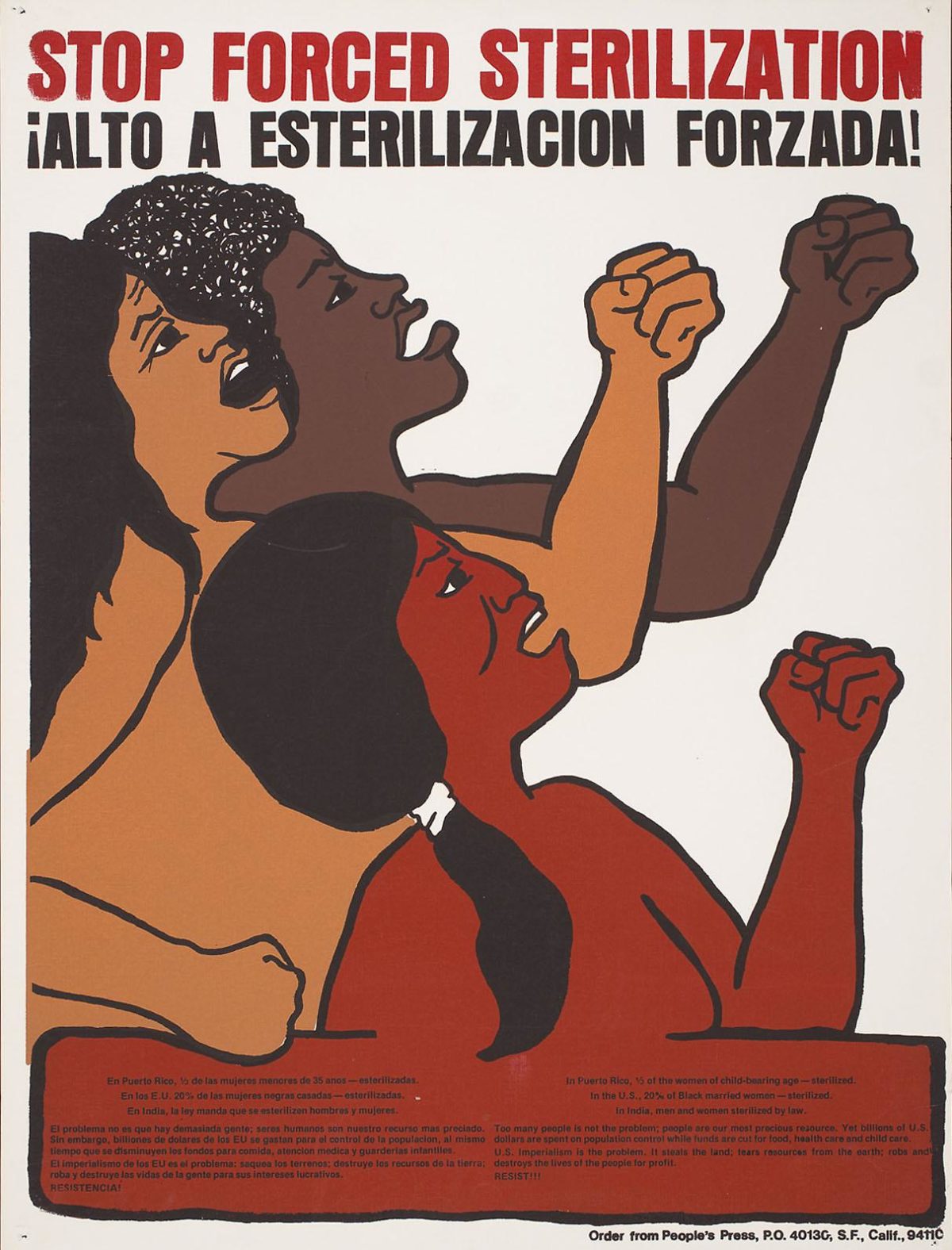
The United States has a long record of abusing, harming, and exploiting human beings to gain control and power, and to maintain their status quo. Attempting to govern someone’s internal flesh is no different.
As the lawsuits and other legal challenges against Texas’ 6-week abortion ban slowly make their way through court, people’s lives and safety remain at risk.
We asked Rachael Lorenzo the same question we asked Joanna Grossman: what they would say, if given the chance, to the lawmakers in Texas who crafted the abortion ban.
“I hope they never feel the dehumanization that they’ve put so many of their constituents through, and I’m gonna pray for them.”
Rachael Lorenzo, co-founder of Indigenous Women Rising
Unicorn Riot's coverage on Abortion and Reproductive Rights:
- FBI Harasses Activists in Florida; Two Indicted on Federal Charges for Jane’s Revenge Actions - Feb. 26, 2023
- Richmond Abortion Rights Rally Highlights Intersections of SCOTUS Ruling - July 29, 2022
- July 4th Abortion Protests in Washington, D.C. - July 4, 2022
- The End of Federal Abortion Protections Isn’t the End of Abortion Access - June 25, 2022
- Dozens in Boulder Protest Christian Nationalist Group and its Spreading of Extremism - June 23, 2022
- Leaked U.S. Supreme Court Abortion Draft Decision Incites Protests - May 3, 2022
- A Fight to Defend Abortion in Brooklyn: Clinic Defense and New York City for Abortion Rights - April 9, 2022
- Freedom of Choice Under Fire in Ohio - Jan. 5, 2022
- “Abortion is Sacred:” The Past and Present of Reproductive Rights - Oct. 14, 2021
- Patients Face Daily Harassment Outside Planned Parenthood in Denver - Nov. 10, 2018
Follow us on X (aka Twitter), Facebook, YouTube, Vimeo, Instagram, Mastodon, Threads, BlueSky and Patreon.
Please consider a tax-deductible donation to help sustain our horizontally-organized, non-profit media organization:



